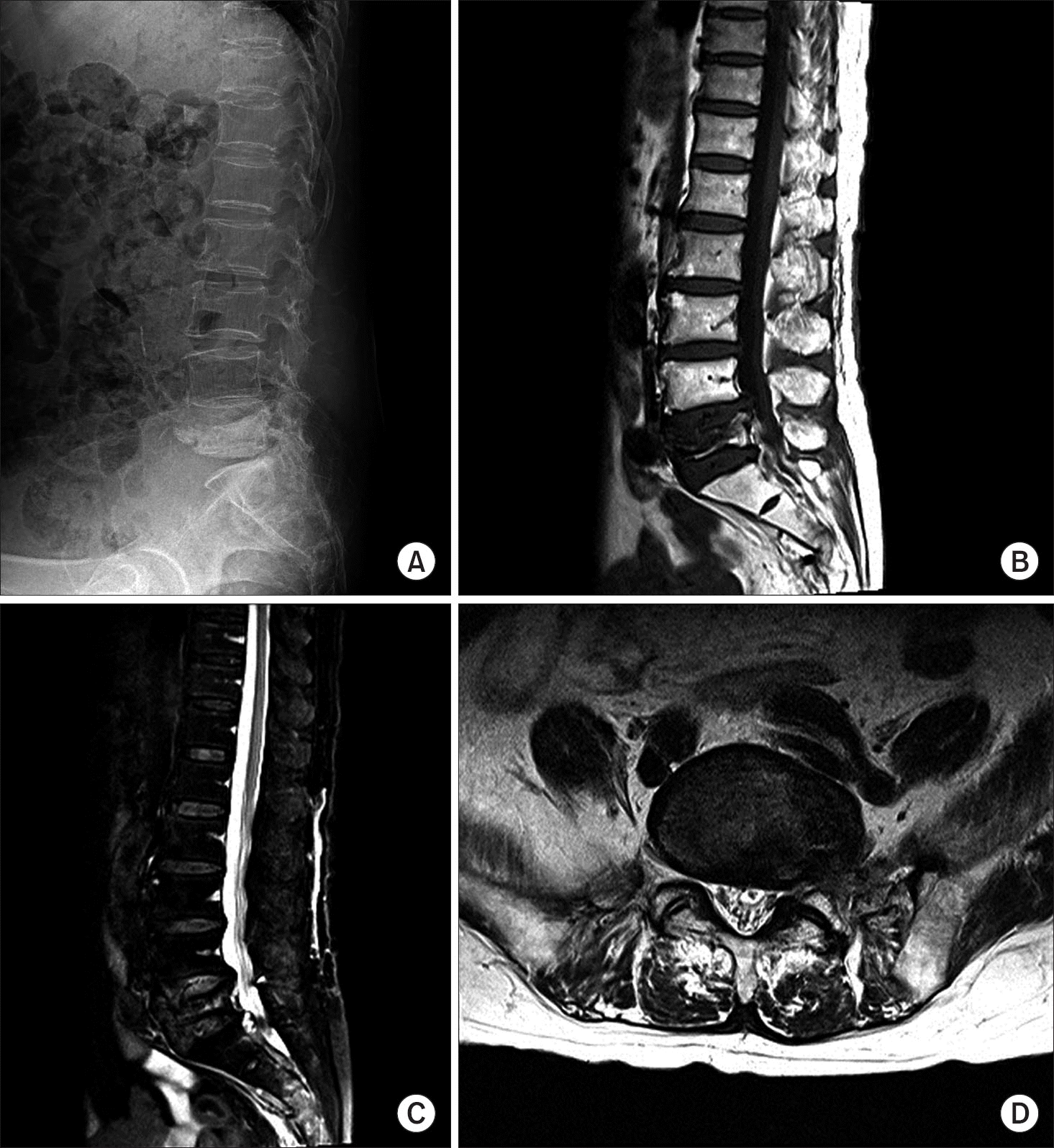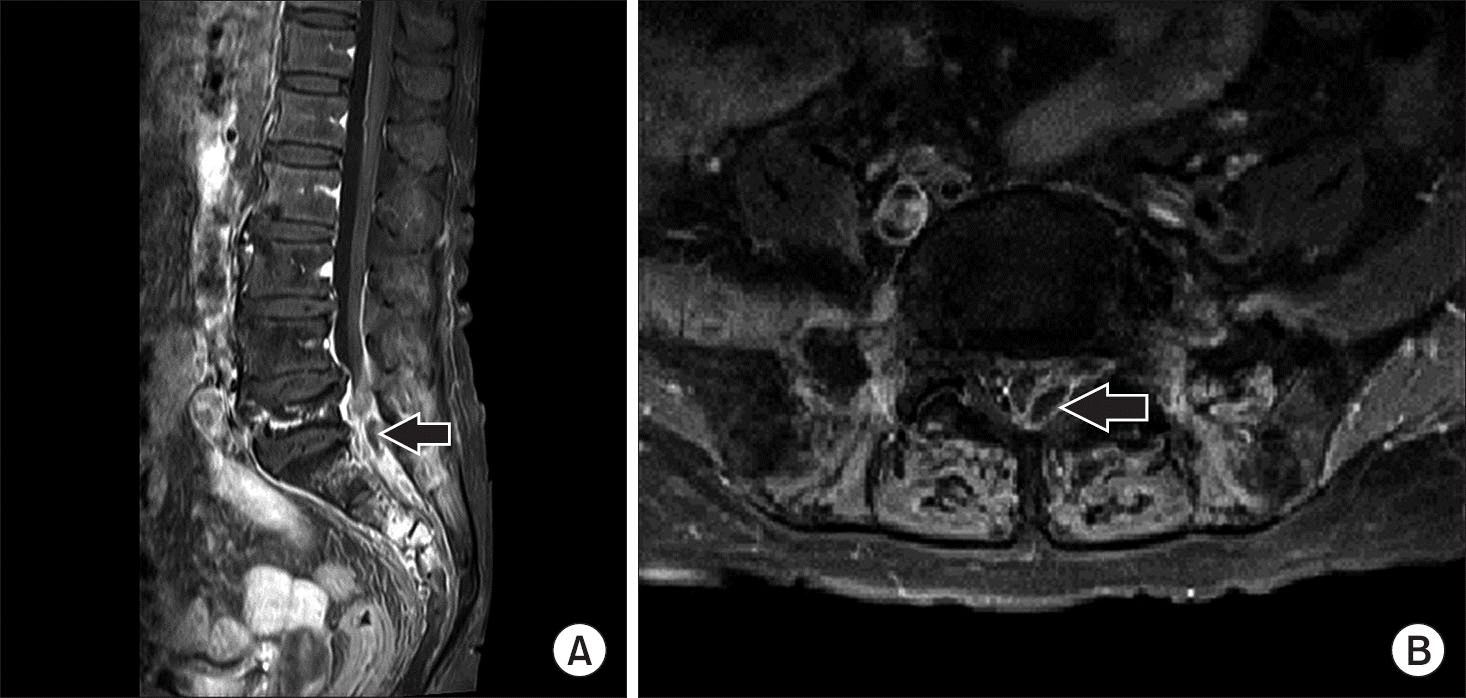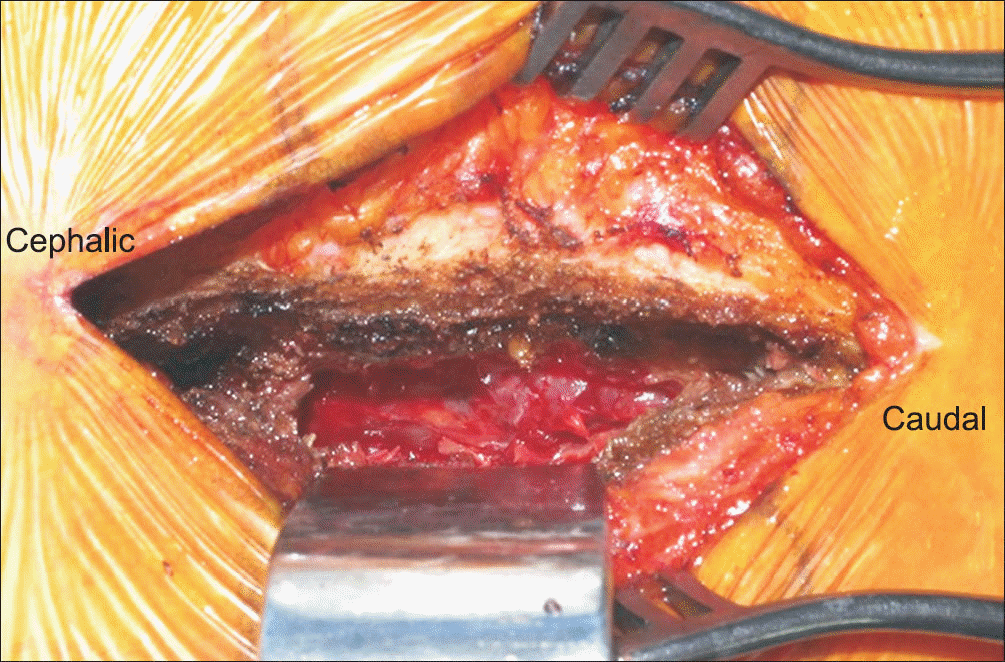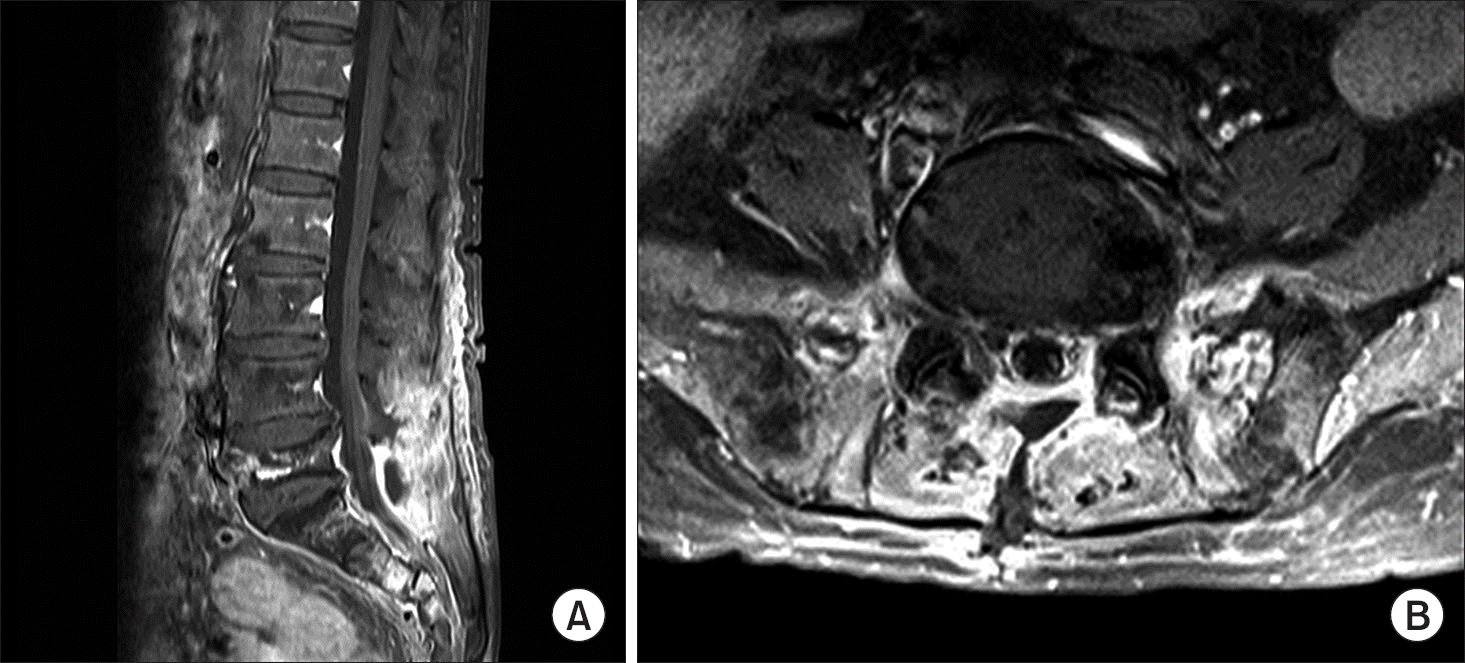Abstract
Spinal epidural hematoma (SEH) can occur naturally or traumatically and is most common in patients with an underlying disease of the vascular structure or coagulation disorder. Most SEHs occur naturally for no apparent reason, and epidural hematoma caused by trauma is less common, comprising 1.0%–1.7% of total spinal injuries. Few reports of SEH induced cauda equine syndrome resulting from low-energy injury caused by osteoporotic vertebral compression fractures are available. The authors experienced a case of delayed SEH after hemorrhage due to a low-energy injury in an elderly patient. No cases in Korea have been reported; therefore, this case is reported with a review of the relevant literature.
References
1. Rechtine GR 2nd, Bolesta MJ, Chrin AM, Louis K. Spontaneous resolution of symptomatic post-traumatic cervical epidural hematoma. J Bone Joint Surg Am. 2001. 83-A:255–8.

2. Hsieh CT, Chiang YH, Tang CT, Sun JM, Ju DT. Delayed traumatic thoracic spinal epidural hematoma: a case report and literature review. Am J Emerg Med. 2007. 25:69–71.

3. Cuenca PJ, Tulley EB, Devita D, Stone A. Delayed traumatic spinal epidural hematoma with spontaneous resolution of symptoms. J Emerg Med. 2004. 27:37–41.

4. Kreppel D, Antoniadis G, Seeling W. Spinal hematoma: a literature survey with meta-analysis of 613 patients. Neurosurg Rev. 2003. 26:1–49.

5. Rodrigues LM, Abreu F, Fujiki EN, Milani C. Delayed traumatic spinal epidural hematoma with neurological deficits. Einstein (Sao Paulo). 2010. 8:477–9.

6. Adhiyaman V, Asghar M, Ganeshram KN, Bhowmick BK. Chronic subdural haematoma in the elderly. Postgrad Med J. 2002. 78:71–5.
7. Boukobza M, Guichard JP, Boissonet M. . Spinal epidural haematoma: report of 11 cases and review of the literature. Neuroradiology. 1994. 36:456–9.

Figure 1.
Initial lateral Radiography (A), T1 weighted sagittal magnetic resonance image (B), and T2 weighted fat suppression sagittal magnetic resonance image (C) demonstrating a recent compression fracture of the L5 vertebral body compression rate 30.2%. T2 weighted axial magnetic resonance image through the L5 vertebra (D) showing no visible epidural hematoma.

Figure 2.
Preoperation magnetic resonance imaging studies demonstrating epidural hematoma. (A) Gadolinium enhanced T1 weighted sagittal magnetic resonance image shows epidural lesion (hematoma) (arrow) showing intermediate high signal, compressing dural sac. (B) Gadolinium enhanced T1 weighted axial magnetic resonance image shows that the left posterolateral dural sac (arrow) is a compressed epidural lesion at L5-S1.





 PDF
PDF ePub
ePub Citation
Citation Print
Print




 XML Download
XML Download